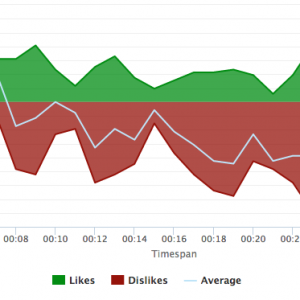How to Optimize Ads for Maximum Performance

In today’s digital age, advertising is a crucial component of any marketing strategy. With so many different ad formats and platforms available, it can be challenging to ensure that your ads are performing at their best. This is where ad optimization comes in. In this article, we will explore the must-know tactics for optimizing your advertisements to achieve maximum performance.
Understanding Ad Optimization
Before diving into the specifics of ad optimization, it is essential to understand what it means. Ad optimization is the process of refining and fine-tuning your advertisements to make them more efficient. The goal is to ensure that you are reaching your target audience in the most effective way possible, ultimately leading to higher conversion rates and better returns on investment.
One of the key factors in ad optimization is understanding your target audience. By knowing who your audience is, you can tailor your ads to speak directly to them. This can include using language that resonates with them, highlighting pain points that your product or service solves, and showcasing social proof, such as customer testimonials or reviews.
What is Ad Optimization?
Ad optimization is the process of analyzing your ads’ performance and then making necessary adjustments to improve their results. These adjustments can take many forms, including but not limited to changes in ad format, copy, or audience targeting. Essentially, ad optimization involves a constant cycle of analysis, experimentation, and refinement to ensure your ad campaigns are delivering the best possible results.
Another important aspect of ad optimization is tracking and measuring your results. By using tools such as Spot Trender, you can see how your ads are performing and make data-driven decisions about how to improve them. This can include adjusting your targeting, changing your ad copy, or even testing different ad formats to see what works best.
Why is Ad Optimization Important?
Ad optimization is crucial because it enables you to maximize the performance of your advertising campaigns. By continually making improvements to your ads, you can ensure that you are getting the most out of your advertising spend. Additionally, effective ad optimization can help you reach your target audience more efficiently, increasing your chances of converting leads into paying customers.
It’s also worth noting that ad optimization is an ongoing process. As your business grows and evolves, so too will your target audience and their needs. By regularly reviewing and refining your ads, you can stay ahead of the curve and ensure that your advertising campaigns continue to deliver results.
In conclusion, ad optimization is a critical component of any successful advertising campaign. By understanding your target audience, analyzing your results, and making data-driven decisions about how to improve your ads, you can ensure that your advertising campaigns are delivering the best possible results.
Setting Clear Advertising Goals
The world of advertising can be a tricky one to navigate. With so many different platforms and strategies available, it can be challenging to know where to start. However, setting clear goals is the first step in optimizing your ads for maximum performance.
When setting goals, it’s important to consider what you want to achieve with your ad campaign. Are you looking to increase brand awareness, generate leads, or drive sales? Once you have a clear idea of your objectives, you can start to think about how you’ll measure success.
Defining Your Target Audience
Before you can optimize your ads, you need to know who you’re trying to reach. Defining your target audience is a crucial step in the ad optimization process. You can define your audience by demographics such as age, gender, location, and interests. By understanding your audience, you can better tailor your advertisements to their needs and preferences.
It’s also important to consider the different stages of the buyer’s journey when defining your target audience. Are you targeting customers who are at the awareness stage, or are you trying to reach those who are ready to make a purchase? Understanding where your audience is in the buyer’s journey will help you create more effective ads.
Establishing Key Performance Indicators (KPIs)
Next, it’s essential to establish clear KPIs for measuring your ad campaign’s success. Examples of KPIs include click-through rates, conversion rates, and return on investment. Having clear KPIs in place will allow you to monitor your ad campaign’s performance over time and make necessary adjustments to improve its results.
It’s also important to consider the timeframe for achieving your KPIs. Are you looking to achieve your goals in a few weeks, or do you have a longer-term strategy in mind? Understanding your timeframe will help you set realistic KPIs and ensure that you’re on track to achieve your objectives.
Creating Compelling Ad Copy
Once you’ve defined your target audience and established your KPIs, it’s time to start creating your ad copy. Your ad copy should be compelling and relevant to your target audience. It should also include a clear call-to-action that encourages users to take the desired action, whether that’s clicking through to your website or making a purchase.
It’s also important to consider the format of your ad copy. Are you creating a text-based ad, or are you using images or video? Each format has its own strengths and weaknesses, so it’s important to choose the one that’s most appropriate for your goals and target audience.
Testing and Optimizing Your Ads
Finally, it’s important to continuously test and optimize your ads to ensure that they’re performing at their best. This includes testing different ad formats, targeting options, and ad copy to see what works best for your audience. You can leverage next generation ad-testing capabilities through online software solutions to rapidly iterate on concepts and messaging. Spot Trender provides unique tools for collecting live audience reactions throughout the entire exposure of video, radio and other multimedia formats for your creative.
It’s also important to monitor your KPIs regularly and make adjustments as needed. If you’re not seeing the results you want, it may be time to make changes to your ad campaign to improve its performance.
Conclusion
Setting clear advertising goals is the first step in creating a successful ad campaign. By defining your target audience, establishing clear KPIs, creating compelling ad copy, and continuously testing and optimizing your ads, you can improve the performance of your ad campaigns and achieve your marketing objectives.
Choosing the Right Ad Format
Choosing the right ad format is a critical element in ad optimization that can make or break your advertising campaign. It is essential to understand the different ad formats available and their respective strengths and weaknesses to ensure that you choose the right format that aligns with your advertising goals.
When selecting the ad format, it’s crucial to consider your target audience, the message you want to convey, and the platform you’ll be using to display your ads. Here are some of the most common ad formats and their unique features:
Display Ads
Display ads are banner or image-based advertisements that are displayed on websites or mobile apps. They are often used for brand awareness campaigns and can be effective in capturing users’ attention. Display ads come in various sizes and formats, including static images, animated graphics, and HTML5 ads. They can be placed in different locations on a web page, such as above the fold or in the sidebar.
However, display ads can be intrusive and may not be as effective at driving conversions as other ad formats. To make the most of display ads, it’s essential to create visually appealing and engaging ads that resonate with your target audience.
Video Ads
Video ads are commercials that run before, during, or after video content. They can be an effective way to tell a story or showcase a product, and studies have shown that video ads can lead to increased engagement and higher conversion rates. Video ads can be in various formats, including pre-roll, mid-roll, post-roll, and native video ads.
However, video ads can be expensive to produce and may not be suitable for all types of products or services. It’s essential to create high-quality videos that are relevant to your target audience and convey your message effectively.
Native Ads
Native ads are ads that are designed to blend in with the content that surrounds them. They are often integrated into websites and mobile apps and can be effective in reaching users who may be resistant to traditional advertising techniques. Native ads can come in various formats, including in-feed ads, sponsored content, and recommendation widgets.
However, native ads may not be as effective in driving clicks or conversions as other ad formats. To make the most of native ads, it’s crucial to create ads that are relevant to the content they are placed in and match the look and feel of the website or app.
Social Media Ads
Social media ads are advertisements that appear in social media feeds or other social media channels. They can be especially effective in reaching a targeted audience, and many social media platforms offer advanced targeting options to help you reach your ideal customer. Social media ads can come in various formats, including image ads, video ads, carousel ads, and sponsored posts.
However, social media ads can be expensive, and the competition for ad space can be fierce. To make the most of social media ads, it’s essential to create ads that are visually appealing, relevant to your target audience, and have a clear call-to-action.
In conclusion, choosing the right ad format can significantly impact the success of your advertising campaign. It’s essential to consider your target audience, the message you want to convey, and the platform you’ll be using to display your ads when selecting the ad format. By understanding the unique features and strengths of each ad format, you can create effective ads that resonate with your target audience and drive conversions.
Crafting Compelling Ad Copy
Once you have established your advertising goals and selected the right ad format, it’s time to focus on crafting compelling ad copy. Effective ad copy can be the difference between a successful campaign and one that falls flat.
Writing Attention-Grabbing Headlines
The headline of your ad is your first chance to capture your target audience’s attention. It’s essential to craft a headline that is attention-grabbing and compelling. You can do this by using emotional language, asking a question, or making a bold statement.
Creating Engaging Ad Descriptions
After your headline, your ad description provides more details about your product or service. It’s essential to create ad descriptions that are engaging and informative, using language that resonates with your target audience.
Using Effective Calls-to-Action (CTAs)
Finally, it’s essential to include a clear call-to-action in your ad. A call-to-action is a statement that encourages the user to take a specific action, such as clicking a link or making a purchase. It’s crucial to use strong, action-oriented language to encourage your target audience to act.
Conclusion
Optimizing your ads for maximum performance takes time and effort, but it’s essential to ensure that your advertising campaigns are delivering the best possible results. By setting clear advertising goals, choosing the right ad format, crafting compelling ad copy, and using effective calls-to-action, you can ensure that your ads are reaching and converting your target audience effectively.








